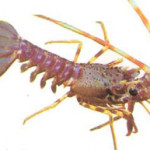
Serranidae
When people talk about coral reefs, fishermen tend to shrug their shoulders and complain about snagged lines and torn nets. But when you talk about groupers, they suddenly sit up and pay attention. Groupers are among the economicallymost important fishes of the coral reef, because of their popularity as food. Yetwithout the coral reef there would probably be no groupers. For this reason, groupers are an extremely important indicator species and your record of theirexistence or non-existence during your dive tells us a lot.
The Goliath Grouper (Epinephelus itajara), sometimes called the jewfish, is classified as critically endangered on the IUCN Red List. Found in shallow, inshore waters to depths of 45m, this indicator prefers areas of rock, coral, and mud bottoms. The jewfish is notable as one of the few groupers found in brackish waters. Strikingly patterned juveniles inhabit mangroves and brackish estuaries, especially near oyster bars. This fish is solitary by nature, with the adults occupying limited home ranges. It is territorial near areas of refuge such as caves, wrecks, and ledges, displaying an open mouth and quivering body to intruders. It feeds on crustaceans and it can reach lengths of 2.5m, weighing up to 450kg.
There is anecdotal evidence of Goliaths stalking and attempting to eat divers! Like all indicators, it is valuable if you can record the particular species you sight. However, recording the total number of groupers is just as important. The species that you might encounter during your dive in the South America – Pacific Coast tropical eco-region are listed below:
- Broomtail Grouper Mycteroperca xenarcha
- Gulf Grouper (Vulnerable IUCN) Mycteroperca jordani
- Itajara Goliath Jewfish Epinephelus itajara
- Leopard Grouper (Vulnerable IUCN) Mycteroperca rosacea
- Sailfin Grouper (Vulnerable IUCN) Mycteroperca olfax
- Sawtail Grouper (Vulnerable IUCN) Mycteroperca prionura
- Spotted Grouper Epinephelus analogus
- Starry Grouper Epinephelus labriformis







Social Profiles